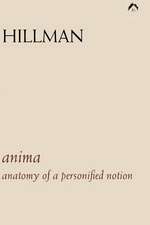Symbiosis and Ambiguity: A Psychoanalytic Study: The New Library of Psychoanalysis
Autor José Bleger Editat de John Churcher, Leopoldo Blegeren Limba Engleză Paperback – 26 oct 2012
Bleger's thesis is that starting from primitive undifferentiation, prior to the paranoid-schizoid position described by Klein, autism and symbiosis co-exist as narcissistic relations in a syncretic ‘agglutinated’ nucleus. In symbiosis part of the mind is deposited in an external person or situation; in autism it is deposited in the patient's own mind or body. The nucleus is ambiguous and persists in adults as the psychotic part of the personality.
Symbiosis tends to immobilise the analytic process, so the analyst must mobilise, fragment and discriminate the agglutinated nucleus, whose ambiguity tends to ‘blunt’ persecutory situations. The psychoanalytic setting functions as a silent refuge for the psychotic part of the personality, where it creates a ‘phantom world’. At some point, therefore, the setting itself has to be analysed and the analytic relationship de-symbiotised, as Bleger observes in a celebrated chapter on the setting.
José Bleger’s work demonstrates the need to analyse early narcissistic object relations as they arise clinically, especially in the setting. More widely, he regards undifferentiation and participation as operating throughout life: in groups, institutions, and society as a whole.
| Toate formatele și edițiile | Preț | Express |
|---|---|---|
| Paperback (1) | 333.01 lei 6-8 săpt. | |
| Taylor & Francis – 26 oct 2012 | 333.01 lei 6-8 săpt. | |
| Hardback (1) | 914.39 lei 6-8 săpt. | |
| Taylor & Francis – 26 oct 2012 | 914.39 lei 6-8 săpt. |
Din seria The New Library of Psychoanalysis
- 5%
 Preț: 293.44 lei
Preț: 293.44 lei - 5%
 Preț: 266.39 lei
Preț: 266.39 lei - 5%
 Preț: 264.13 lei
Preț: 264.13 lei - 5%
 Preț: 295.02 lei
Preț: 295.02 lei - 5%
 Preț: 298.13 lei
Preț: 298.13 lei - 5%
 Preț: 260.72 lei
Preț: 260.72 lei - 5%
 Preț: 294.02 lei
Preț: 294.02 lei - 5%
 Preț: 233.05 lei
Preț: 233.05 lei -
 Preț: 334.52 lei
Preț: 334.52 lei - 5%
 Preț: 349.43 lei
Preț: 349.43 lei - 5%
 Preț: 219.54 lei
Preț: 219.54 lei - 5%
 Preț: 282.40 lei
Preț: 282.40 lei -
 Preț: 347.67 lei
Preț: 347.67 lei - 5%
 Preț: 260.93 lei
Preț: 260.93 lei - 5%
 Preț: 296.08 lei
Preț: 296.08 lei - 5%
 Preț: 233.57 lei
Preț: 233.57 lei - 5%
 Preț: 235.66 lei
Preț: 235.66 lei - 5%
 Preț: 253.71 lei
Preț: 253.71 lei - 5%
 Preț: 218.26 lei
Preț: 218.26 lei - 5%
 Preț: 295.41 lei
Preț: 295.41 lei - 5%
 Preț: 316.84 lei
Preț: 316.84 lei -
 Preț: 309.55 lei
Preț: 309.55 lei -
 Preț: 309.79 lei
Preț: 309.79 lei - 5%
 Preț: 294.71 lei
Preț: 294.71 lei - 5%
 Preț: 344.75 lei
Preț: 344.75 lei - 5%
 Preț: 280.32 lei
Preț: 280.32 lei - 5%
 Preț: 295.41 lei
Preț: 295.41 lei - 5%
 Preț: 286.68 lei
Preț: 286.68 lei -
 Preț: 336.84 lei
Preț: 336.84 lei - 5%
 Preț: 233.65 lei
Preț: 233.65 lei - 5%
 Preț: 333.73 lei
Preț: 333.73 lei - 5%
 Preț: 762.85 lei
Preț: 762.85 lei - 5%
 Preț: 250.36 lei
Preț: 250.36 lei - 5%
 Preț: 234.44 lei
Preț: 234.44 lei - 5%
 Preț: 235.45 lei
Preț: 235.45 lei - 5%
 Preț: 231.82 lei
Preț: 231.82 lei - 5%
 Preț: 331.64 lei
Preț: 331.64 lei - 5%
 Preț: 273.04 lei
Preț: 273.04 lei - 5%
 Preț: 284.59 lei
Preț: 284.59 lei - 5%
 Preț: 280.73 lei
Preț: 280.73 lei - 18%
 Preț: 811.99 lei
Preț: 811.99 lei -
 Preț: 310.43 lei
Preț: 310.43 lei - 17%
 Preț: 246.34 lei
Preț: 246.34 lei - 5%
 Preț: 364.17 lei
Preț: 364.17 lei - 5%
 Preț: 367.79 lei
Preț: 367.79 lei - 10%
 Preț: 280.14 lei
Preț: 280.14 lei - 11%
 Preț: 278.48 lei
Preț: 278.48 lei - 5%
 Preț: 365.37 lei
Preț: 365.37 lei - 5%
 Preț: 363.52 lei
Preț: 363.52 lei
Preț: 333.01 lei
Preț vechi: 350.53 lei
-5% Nou
Puncte Express: 500
Preț estimativ în valută:
63.74€ • 66.29$ • 53.41£
63.74€ • 66.29$ • 53.41£
Carte tipărită la comandă
Livrare economică 13-27 martie
Preluare comenzi: 021 569.72.76
Specificații
ISBN-13: 9780415464628
ISBN-10: 0415464625
Pagini: 392
Ilustrații: 1 black & white illustrations, 2 black & white tables, 1 black & white line drawings
Dimensiuni: 156 x 234 x 21 mm
Greutate: 0.59 kg
Ediția:New.
Editura: Taylor & Francis
Colecția Routledge
Seria The New Library of Psychoanalysis
Locul publicării:Oxford, United Kingdom
ISBN-10: 0415464625
Pagini: 392
Ilustrații: 1 black & white illustrations, 2 black & white tables, 1 black & white line drawings
Dimensiuni: 156 x 234 x 21 mm
Greutate: 0.59 kg
Ediția:New.
Editura: Taylor & Francis
Colecția Routledge
Seria The New Library of Psychoanalysis
Locul publicării:Oxford, United Kingdom
Public țintă
Postgraduate, Professional, and Professional Practice & DevelopmentNotă biografică
José Bleger was born in Argentina in 1922. An active member of the Asociación Psicoanalítica Argentina, he was also a highly-regarded Professor of Psychology and a well known intellectual. Author of many books and papers, his reputation grew steadily after his early death in 1972. He is now considered a major figure of Argentinian psychoanalysis.
John Churcher is a psychoanalyst in private practice in Manchester, and a member of the British Psychoanalytical Society. Until 2002 he was a Lecturer in Psychology at the University of Manchester.
Leopoldo Bleger, born in Argentina, has lived in Paris since 1976. A Training Analyst of the Association Psychanalytique de France, he is currently General Secretary of the European Federation of Psychoanalysis.
John Churcher is a psychoanalyst in private practice in Manchester, and a member of the British Psychoanalytical Society. Until 2002 he was a Lecturer in Psychology at the University of Manchester.
Leopoldo Bleger, born in Argentina, has lived in Paris since 1976. A Training Analyst of the Association Psychanalytique de France, he is currently General Secretary of the European Federation of Psychoanalysis.
Cuprins
Etchegoyen , Preface. Bleger, Churcher, Editorial Introduction. Prologue. Part I: On Symbiosis . Study of Dependence-Independence in Relation to the Process of Projection-Introjection. Symbiosis in Warrior’s Rest. Modalities of Object Relations. Study of the Psychotic Part of the Personality. Part II: On Ambiguity . Ambiguity in Psychoanalytic Clinical Work. Psychoanalysis of The Psychoanalytic Setting. Part III: Appendix . Ambivalence and Ambiguity: The Background Literature. Commentary on ‘The Antithetical Meaning of Primal Words'. Ambiguity and Syncretism in Freud’s ‘The Uncanny’.
Descriere
Symbiosis and Ambiguity is the first English edition of José Bleger’s study of early object relations. It is rooted in Kleinian clinical thinking, and in work by Argentinian analysts.





























